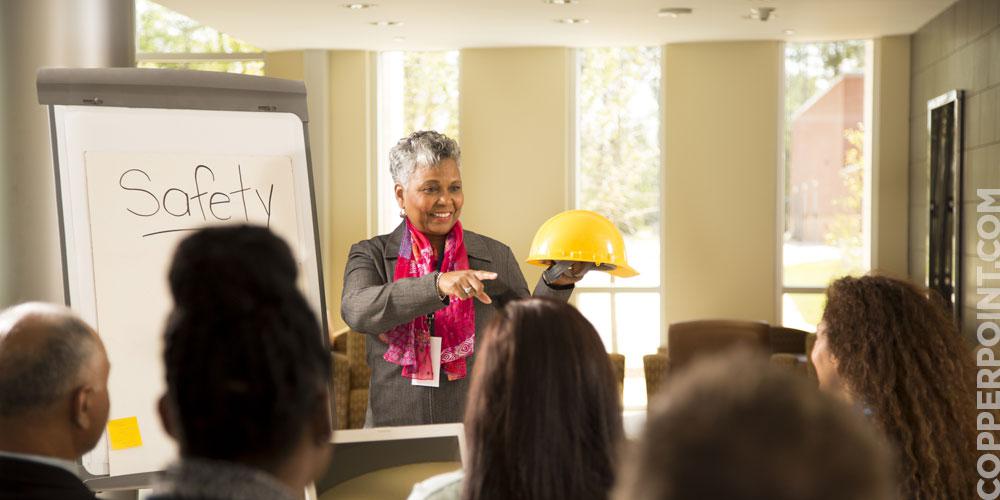Control Your Risk with a Safety Committee

Are you looking to reduce your company’s total cost of risk? Research shows a proven way to do just that: safety committees. Organizations with a higher percentage of their workforce engaged in safety committees have a lower rate of injury and illness, which adds up to lower risk costs for the business.
The upside of safety committees
There are other benefits of establishing a safety committee in the workplace, too. First, it enables better communication among leaders and team members. Because safety teams typically are composed of employees from across an organization, there is increased involvement in creating a safer work environment.
Also, committee members are communicating about safety risks in their respective areas, and they can share lessons learned with one another to prevent future hazards. All of these benefits help foster a stronger safety culture within the entire organization.
Getting started
Although, in most cases, safety committees are not required by OSHA, the many benefits they offer make them worth the effort. If you do decide to establish a safety committee within your organization, it’s important to know that you are subject to OSHA’s safety committee regulations, as outlined in Fed OSHA 1960.
When you get started, consider who will be part of the safety committee. You should establish standards for:
- Who makes up the committee
- How many members it has
- Which departments are represented
- How this role is assigned
- How often members are rotated
- How often the committee will meet (at least quarterly)
It’s a best practice to elect a committee chair, someone who can take the lead and keep the committee meetings on track. Assign someone to keep minutes from the meetings and make them available to committee members and other employees, upon request.
Make it a collaborative effort
In order to keep safety committee members actively engaged, have them come prepared to share the following at each meeting:
- One near-miss situation and how it was handled
- One safety suggestion
- One example of positive reinforcement of safe behavior at work
You can also include others in these safety efforts. Just because an employee isn’t on the safety committee doesn’t mean he or she won’t have valuable input, so be sure to regularly solicit suggestions from the greater employee population.
Auditing safety practices
One of the first orders of business for the safety committee should be to review previous workplace inspections and perform new inspections on anything that hasn’t been evaluated. These inspections could come from the committee, individual members or other sources within your organization.
Once the inspections have been assessed, the safety committee can set goals, assign action items and create a timeline for each safety initiative. You can also report on safety successes to the organization and use positive reinforcement to reward safe behavior on the job.
Other considerations
Your safety committee can assist with many safety-related efforts within your organization. They can help:
- Determine what safety training your employees need
- Establish safety expectation for employees
- Create a process to report, evaluate or correct hazards
- Investigate accidents
- Inform applicable standards/regulations and company policies
Supporting the safety committee for maximum impact
In order to fully achieve the many potential benefits of safety committees, it’s important to support the work they do. Help the committee succeed by making essential information available to them, including IIPP, accident data, SDS, reports, standards and any other useful documentation. You can also allocate financial resources to bolster the safety committee’s work, as well as provide the support of your human resources team.
By implementing a safety committee at your organization, you can help reduce the costs associated with safety risks -- a win-win for all involved.
Visit us at copperpoint.com for more safety resources.
Founded in 1925, CopperPoint Insurance Companies is a leading provider of workers’ compensation and commercial insurance solutions operating in six southwestern states. To learn more about our insurance products and find resources to better manage your risks, explore our website or contact your independent insurance agent.


